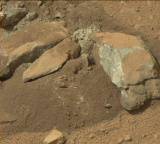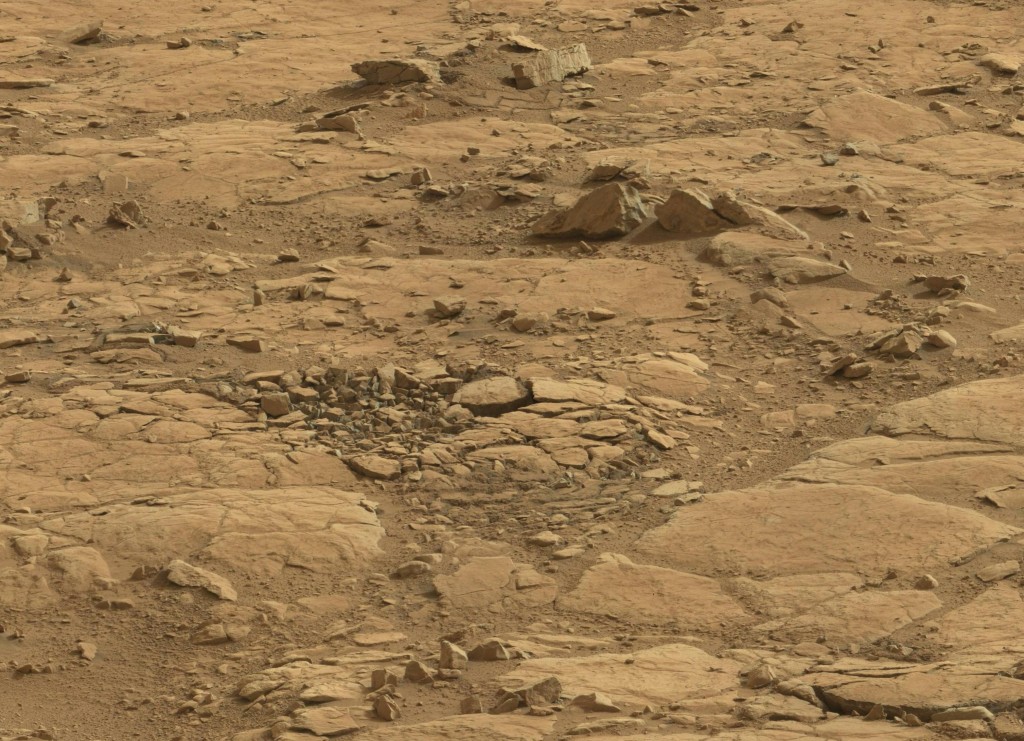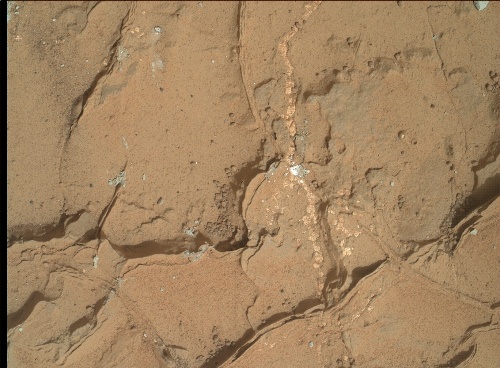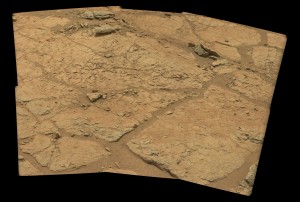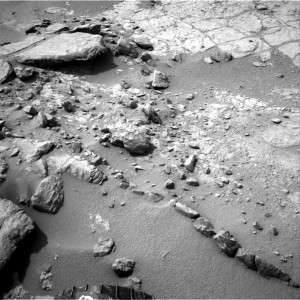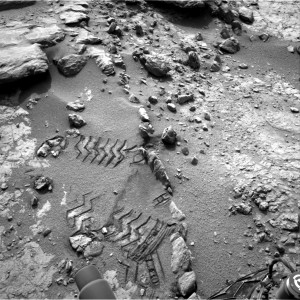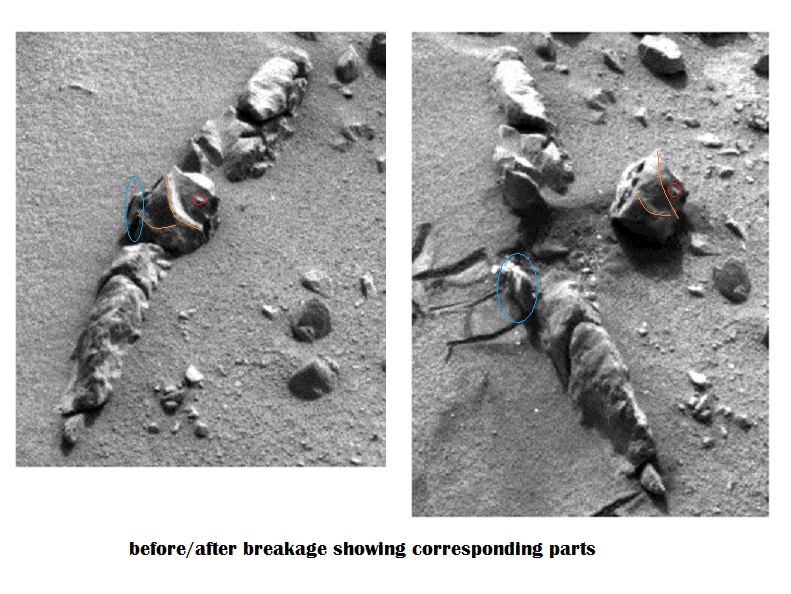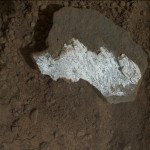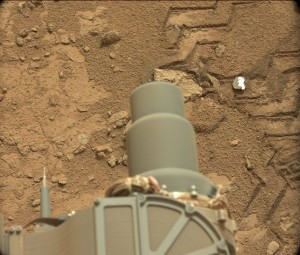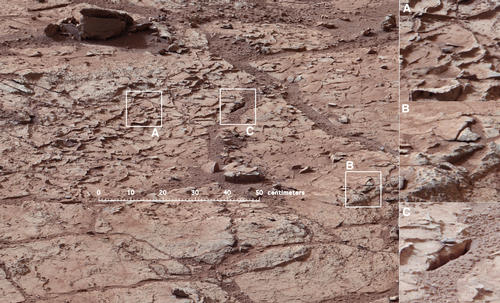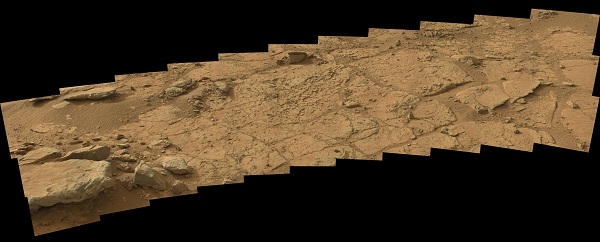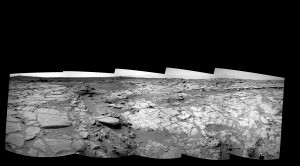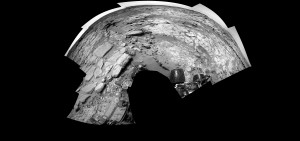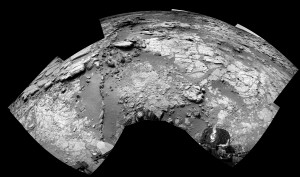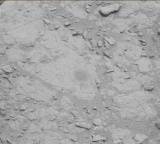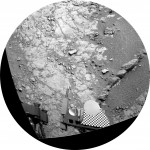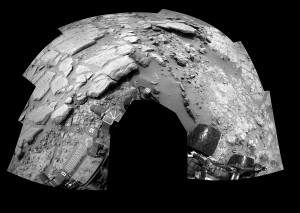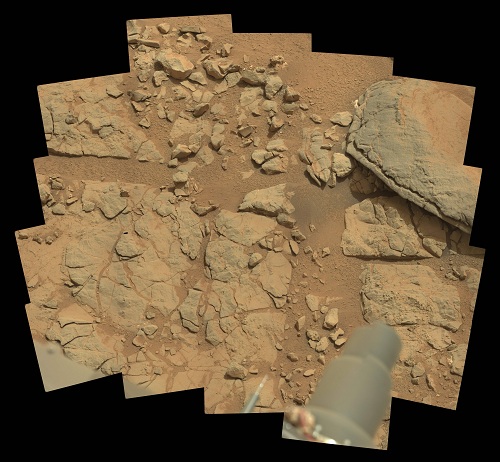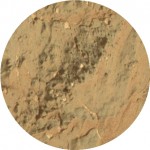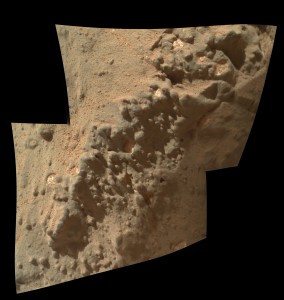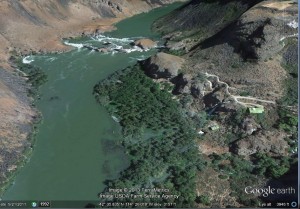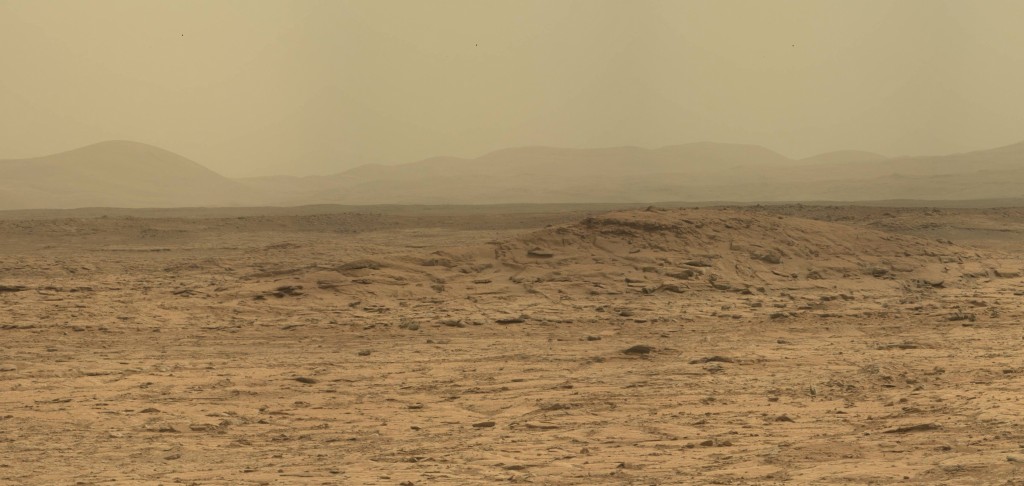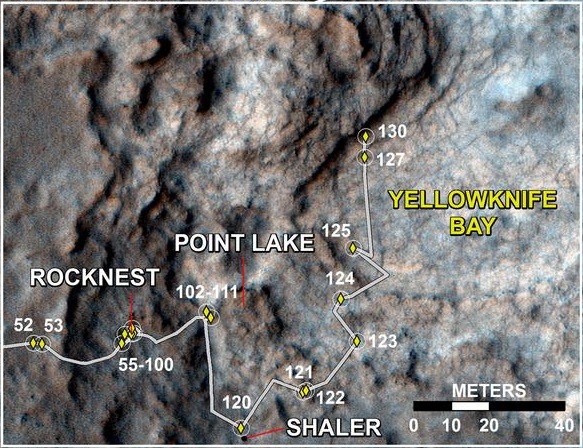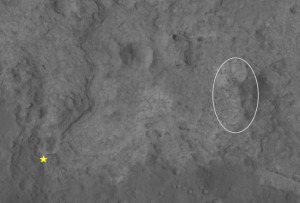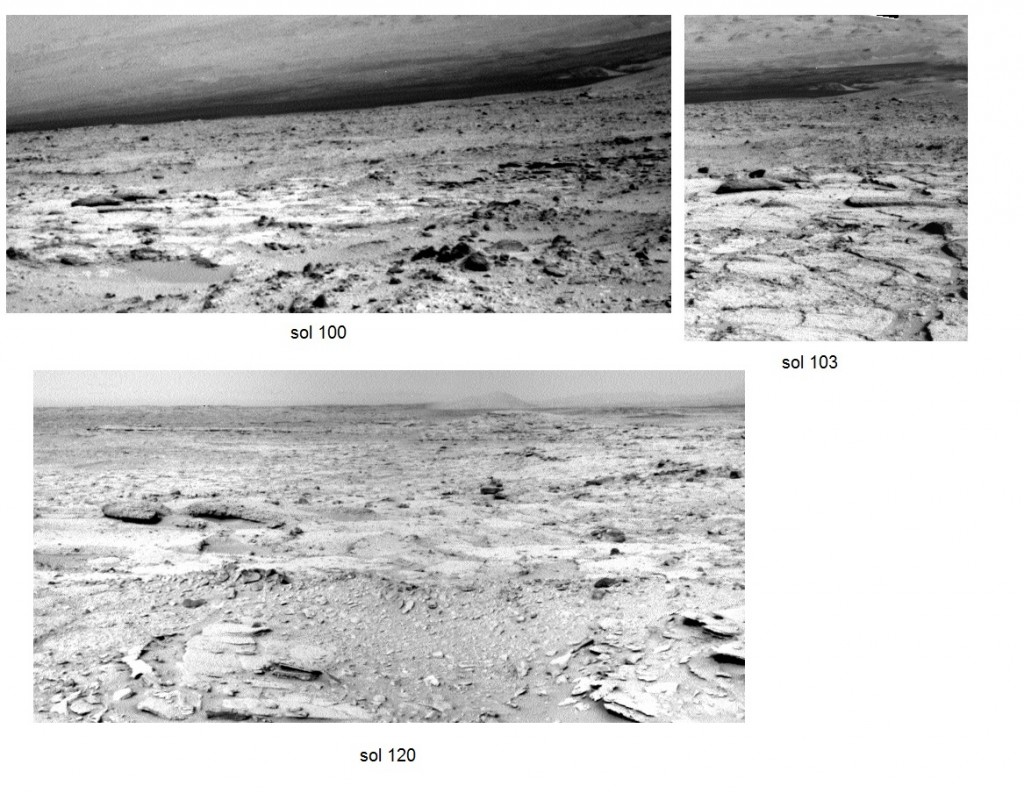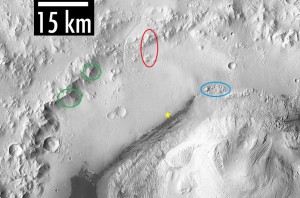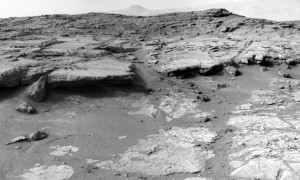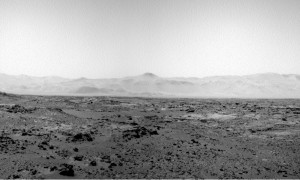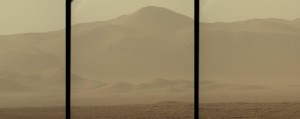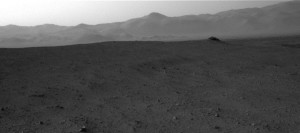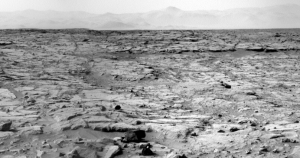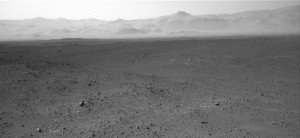I’ve featured a number of panoramas made from mastcam and navcam images, and of course JPL occasionally features some as well, but the raw image gallery contains many more, in content, needing only assembly with PTgui or another panorama maker. I’ve accumulated many that I have not shown and here are a few of them.
I only recently formed this circular panorama from sol 52 navcam images. It was a unique opportunity as the navcam images don’t usually present such a comprehensive view. This view was at the “shell” site where the light balance gives the appearance of seashells to the very interesting arrangement of rocks near the “feet” of Curiosity. Here I use one of the component images, reduced by 50%, as a link to the panorama, instead of a “thumbnail”.
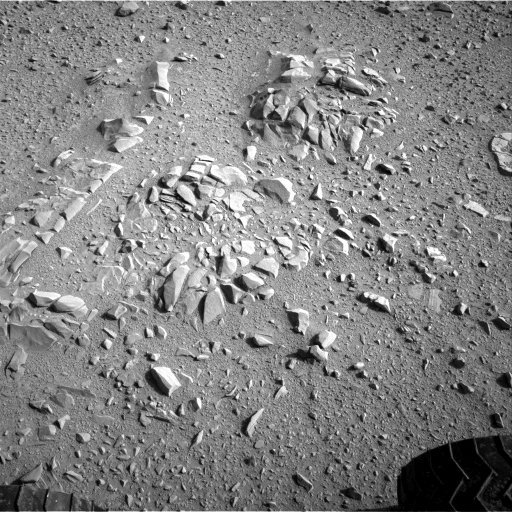
The “shells” of the posted image are at the immediate lower right of center, and rotated in orientation, but easily recognizable. At the top in the middle ground is “rocknest” where Curiosity took its first “scoops”. Above it is “flattop” and to the left along the top edge is “Fort Apache”, ( using my own nomenclature. ) Just above rocknest to the right are two “jetties” which I have found hard to identify in views from other angles. Near one o’clock in the far middle ground are the “dead fish” which I featured earlier. At about two o’clock is “shaler”. After visiting rocknest and shaler, Curiosity traversed counter clockwise in this view, entering Yellowknife Bay and traversing up to its northern boundary, visible at about eleven o’clock as a low wall with a dark shadow. After exploring there it traversed toward the center of this view to its current location in the near middle ground, largely hidden by the higher ground in front of it. At 7 o’clock you can see the tracks Curiosity left as it came over the ridge which separates the landing site from most of the exploration to date, so this panorama stands as a sort of Rosetta stone of this first phase of the mission.
Having mentioned the “dead fish”, here is the full panorama, linked from the same excerpted image previously posted:
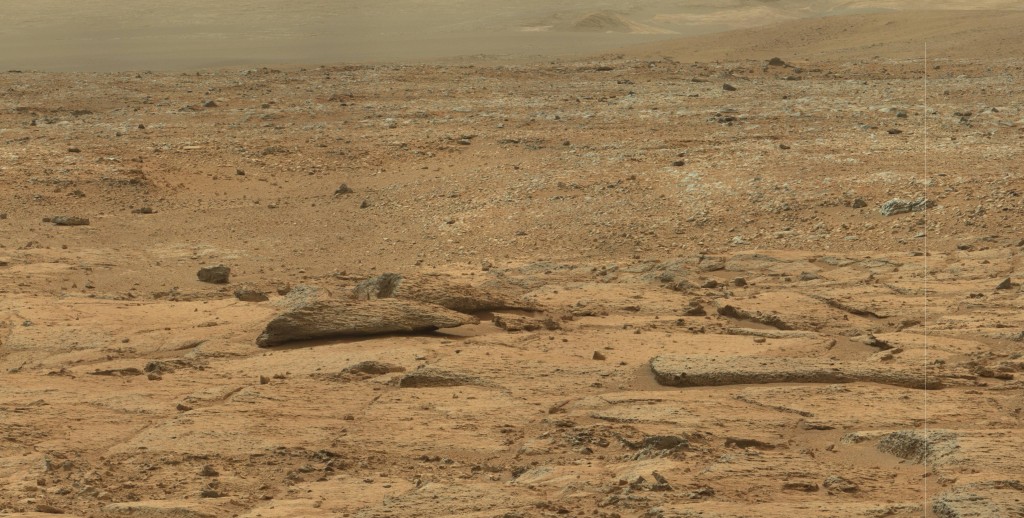
It’s still big, but with improved skills and the miracle of jpeg, I was able to reduce its storage size without sacrificing size or quality. I think the square shape makes it one of Curiosity’s most elegant productions.
Now referring to the current location at the John Klein drill site, here are two panoramic views from sol 125 and sol 172 which make an interesting comparison. I’m taking the latter first, at the current location on the site, and again using excerpts to link them.
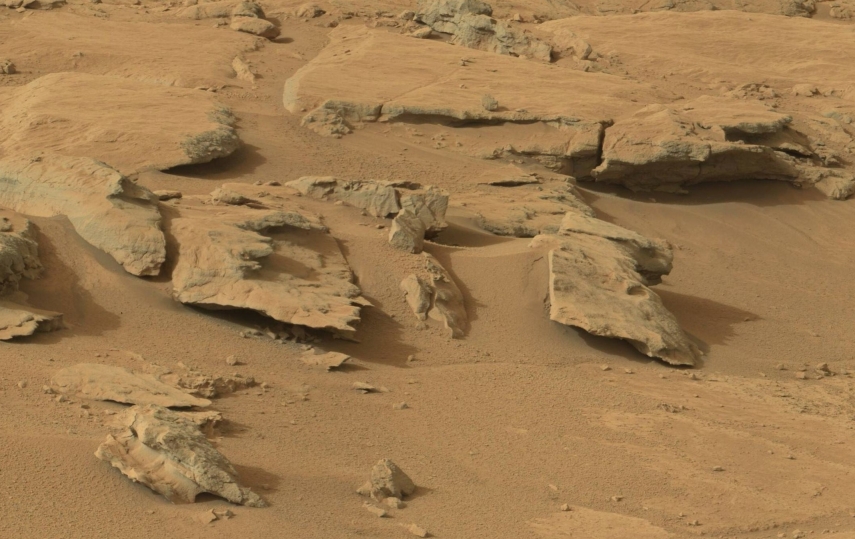
The excerpt is visible along the “garden wall” to the right of Curiosity’s “water tank”, as I always think of it. ( It’s actually the UHF antenna! ) The view is toward the rear of Curiosity, back along the north wall of the bay, along which it traversed. The excerpted view in the post has been reduced to 40% of its size in the panorama, but is still much larger than the corresponding excerpt from the view made at a greater distance, out in the middle of the bay:

Note that this is a much smaller image, composed of 1 X 7 mastcam images, as opposed to 4 X 20 – 4 components of the sol 172 panorama. It’s a great view nevertheless. You can see the John Klein site at the left as sort of a “harbor” at the end of the bay, and you can see the “lean-to” featured in earlier posts just visible along the raised front edge of the harbor. I have found that comparison of these two views provides endless challenges of perspective. Enjoy!
Update: Here’s a sol 168 navcam panorama at the John Klein site. It’s notable for its symmetric composition around the center, and for the appearance of the “robotic arm” feature right at the 12 o’clock position. This feature was “discovered” in the sol 173 mastcam images, as reported elsewhere. Here, it doesn’t look like much, but it is definitely identifiable.
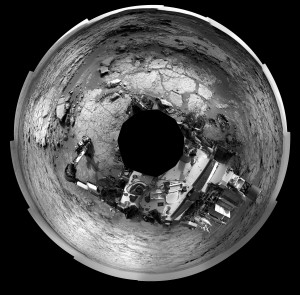
Also notable is the site of one of Curiosity’s “crushing” maneuvers, close in near 3 o’clock. It appears in color in this sol 183 thumbnail view:
